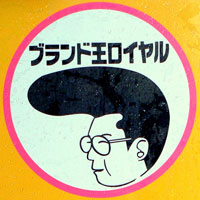Katakana (カタカナ)
カン ユー リード ディス? ー コウイチ

Katakana is a bit of fun. In general, katakana is more angular, sharp, and full of corners. It has the exact same sounds as hiragana, though the symbols are all different. Sounds great, right? Essentially, you’ll be learning the same exact “alphabet” twice (what fun!) but write each symbol differently. For example:
Hiragana: あ, pronounced “ah”
Katakana: ア, pronounced “ah”
And there’s plenty more where that came from.
That might make you wonder why you even need to learn katakana (besides the fact that you need to know it to read / write in Japanese). So, how is katakana normally used and what makes it different from, say, hiragana?
- Foreign Words: The Japanese use a lot of “borrowed” words. This includes things like foreign words (for example, the word for bread in Japanese is “pan” which was introduced by the Portuguese, who say pão, which probably got converted to the French Pain, therefore it’s written in katakana). Basically, borrowed words are converted into Japanese sounds. Sometimes they sound similar, sometimes they sound nothing like the original word. You’ll see more what I mean as you begin to learn the sounds available to the Japanese language.
- Scientific Words: A lot of scientific words are written in katakana. Luckily for you, this textbook won’t be focusing on these kinds of words.
- Onomatopoeia: The Japanese love their onomatopoeia (words that imitate actual sounds, like “boom” or “roar!”). These kinds of words are often used in Japanese daily language, and once you’re able to use it casually in conversation, you’ll know you’re pretty good at Japanese then. We’ll spend time covering onomatopoeia in future chapters, though it won’t happen until you’re at a more intermediate / advanced level.
- Emphasis: It’s kind of like when you italicize words in English. Instead of italicizing things, you can just write them in katakana instead.
- Food: Sometimes you’ll see food items on a menu written in katakana. This is a pretty good thing to know if you’re visiting Japan and don’t have enough time to study properly. You can study katakana, and then you’ll be able to know what you’re ordering at a restaurant (around 30% of the time, perhaps, depending on what kind of restaurant). It’s a good little hack if you’re doing some last minute studying before a big trip. We’ll be learning katakana a bit later (in Season 3). You’ll have a ton of fun learning it, I’m sure. Speaking of which, did you know the Japanese don’t really understand sarcasm?
Anyways, just enjoy your katakana-free lifestyle while you can, it’s coming (cue Jaws soundtrack).
